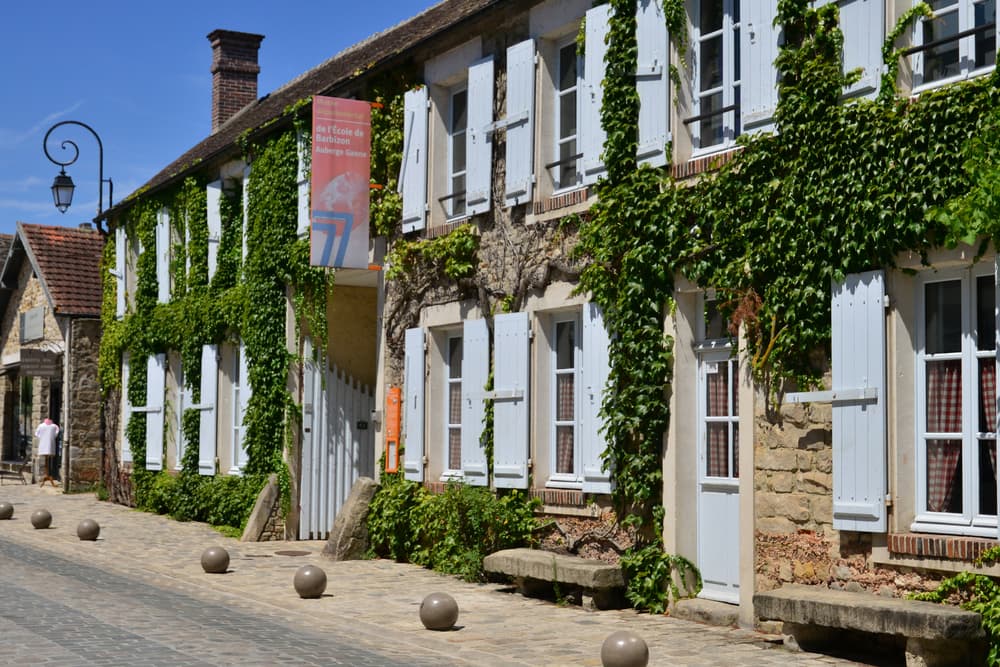

At the beginning of the 19th century, the neo-classical style, notably embodied by Jacques-Louis David, dominated with the representation of historical themes (religious, mythological and war scenes). Often less heroic, the scenes chosen by the Romantics (Géricault, Delacroix...) contribute to maintain landscape painting in the second to last place of the pictorial genres as defined, in the 17th century, by the Academy of Fine Arts.
But several elements will make the lines move: first of all the industrial revolution and the strong urbanization that it provokes and which, in reaction, gives back taste to the artists for all that relates to nature. The development of the railroads made nature easily accessible and, thanks to the easy-to-carry gouache tubes, painters could now set up their easels wherever they wanted.
Inspired by John Constable, the English landscape master exhibited at the 1824 Salon, several Parisian artists took the road to the Fontainebleau forest. So many of them responded to the call of nature that, in 1875, there were no less than a hundred of them in Barbizon and its surroundings!
To work in the open air and from nature, here is the leitmotiv of these painters in search of greenery and aspiring to make the landscape the very subject of their works. Generally relegated to the status of a simple setting, the landscape is thus magnified in the paintings of Albert Charpin featuring flocks of sheep and cattle or in those of Jean-François Millet paying tribute to the work of the fields (the famous Gleaners, now in Orsay).
Peasantry, wild nature, multiple shades of light...: their paintings are no longer dramatic or demonstrative as in history painting (the noble gender par excellence) but simply inspired by real life. A true revolution in the history of art which will inspire, at the end of the 19th century, the impressionist painters who will also make nature the subject of their works.
Even if the term "school" of Barbizon is questionable (the painters who took turns on the spot for about 50 years all had very different styles), a museum is dedicated to it in the heart of this charming village of Seine-et-Marne. As early as 1927, a first establishment located in the former studio of the painter Théodore Rousseau presented works by Narcisse Diaz de la Peña, Charles Jacque or Ferdinand Chaigneau.
The "village of painters" (a nickname acquired in the second half of the 19th century) lost this first museum in the 1930s and it was not until 1975, on the centenary of Millet's death, that the idea of creating a permanent site emerged. At first modest, its collections were enriched after the success of an exhibition in the village regrouping important works of artists who had stayed there and then, in 1981, thanks to the approval of the Ministry of Culture.
It was the space needed for this enriched collection that decided the municipality, in 1987, to acquire the old Ganne inn to make it the current museum. In this place where several of the emblematic painters of the movement resided in the 1870s, visitors can thus immerse themselves completely in the artistic history of the village.
To prepare your visit, go here.
Valerie from Comme des Français
----
Extend your trip in artistic land with these articles :